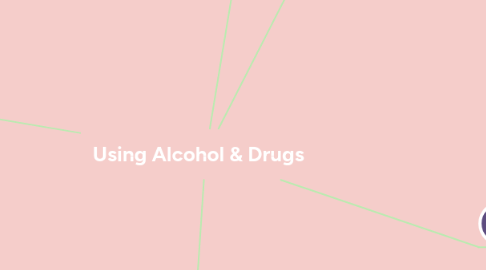
1. Changing Problem Drinking
1.1. Change without therapy (spontaneous remission)
1.2. Treatments
1.2.1. Alcoholic Anonymous (AA)
1.2.1.1. Philosophy - those in need of joining AA can never drink again.
1.2.2. Psychotherapy
1.2.2.1. Motivational Interviewing
1.2.3. Chemical Treatments
1.2.3.1. Disulfiram (Antabuse) react with alcohol to produce unpleasant effects.
1.3. Relapse
1.3.1. Training programs are aimed at changing cognition - learn 1 slip not equal to relapse.
2. Other Drugs
2.1. Sedatives
2.1.1. Tranquilizers & Alcohol
2.1.2. Barbiturates - induce sleep/reduce anxiety
2.1.3. Morphine, heroin, and other opiates - relieve pain
2.2. Stimulants
2.2.1. Amphetamines - stay awake & decrease appetite
2.2.2. Cocaine - stimulant to nervous system
2.2.3. MDMA - hallucinogenic effects
2.3. Marijuana
2.4. Anabolic Steroids
2.4.1. Increase muscle bulk
3. Drug Misuse & Abuse
3.1. All psychoactive drugs are potentially dangerous if misused or abused.
3.2. Treatment
3.2.1. Similar to alcohol abuse
3.3. Preventing & Controlling
3.3.1. Programs similar to smoking prevention
4. Drug Misuse - an appropriate-but not health-threatening level of consumption (can result in social embarrassment/accidents)
5. Drug Abuse - Heavy consumption (Results in damage to one's health)
6. Effects of Alcohol
6.1. Produces tolerence & dependence, and develop withdrawal syndrome & delirium tremens.
6.2. Hazards of alcohol
6.2.1. Direct Effects
6.2.1.1. liver cirrhosis
6.2.1.2. Korsakoff syndrom
6.2.1.3. Cancer, CVD, fetal alcohol syndro,e
6.2.2. Indirect effects
6.2.2.1. Psychological impairements
6.2.2.2. Vehicle crashes
6.2.2.3. Homicide, assault, and rape
7. Why People Drink?
7.1. The Disease Model (Alcohol Dependency Syndrome)
7.1.1. Narrowing of drinking repertoire
7.1.2. Salience of drink-seeking behaviour
7.1.3. Increased tolerence
7.1.4. Withdrawal symptoms
7.1.5. Avoidance of withdrawal by more drinking
7.1.6. Subjective awareness of the need to drink
7.1.7. Reinstatement of dependence after abstinence
7.2. Cognitive-Physiological Theories
7.2.1. Tension Reduction Hypothesis
7.2.2. Alcohol Myopia
7.2.3. Social Learning Model
7.2.3.1. Drinkers adjust alcohol consuming by seeing other's
7.2.3.2. Serve as coping response
7.2.3.3. Negative reinforcement - avoid/reduce painful effects of withdrawal syndroms

